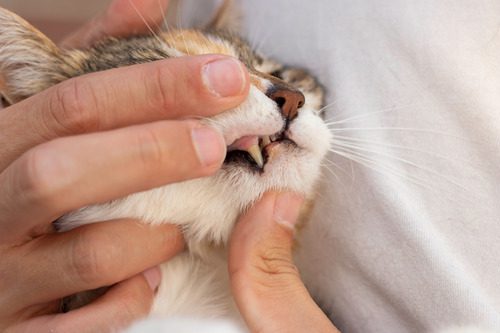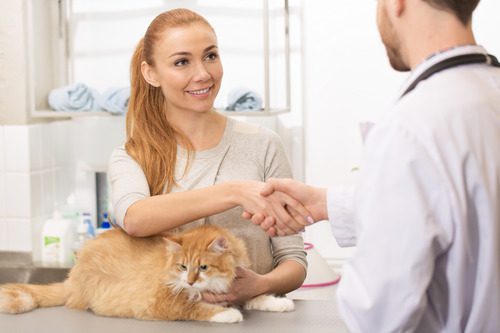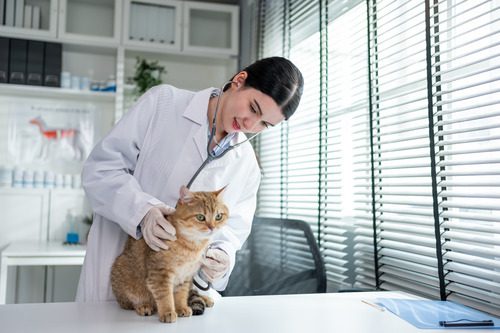Infected & Swollen Spay Incision in Dogs
When your dog undergoes a spay procedure, you expect her to recover quickly and comfortably. But if you’ve noticed redness, swelling, or discharge near the incision site, it’s natural to feel concerned. An infected & swollen spay incision in dogs can interrupt the healing process and lead to complications that require prompt veterinary attention. Knowing how to recognize the signs and understanding what to expect can help you protect your dog’s health and recovery. This blog breaks down what pet parents need to watch for, what may be causing inflammation or infection, and when to contact your veterinarian. If you suspect something isn’t right with your dog’s incision, reach out to Cornerstone Veterinary Hospital of Clifton Park by calling (518) 383-6254 or scheduling an appointment online.

What a Normal Spay Incision Should Look Like
Before identifying problems, it’s helpful to understand what a healing spay incision typically looks like. In the first few days following surgery, mild redness and slight swelling are normal. The incision may look a bit puffy, but it should not have discharge, a strong odor, or appear open. The edges of the incision should be closed, clean, and dry.
Your dog might be slightly sleepy or less active for a day or two, and she may lick the area if given the chance. However, if she’s wearing an Elizabethan collar (e-collar), this behavior is usually limited. The site should gradually improve over the following 7–10 days. If anything looks unusual during this time, it could be a sign that something isn’t right.
Common Signs of an Infected & Swollen Spay Incision in Dogs
When a spay incision becomes infected or severely swollen, the physical symptoms are often obvious. However, some signs may be more subtle at first, especially in stoic or low-energy dogs. Below are some of the most frequent indicators that an incision site isn’t healing properly.
Physical Signs Around the Incision
An infected & swollen spay incision in dogs may appear red, hot to the touch, and significantly enlarged compared to how it looked the day after surgery. You may see discharge that is yellow, green, or cloudy, and the area may have a foul odor. Crusting, excessive bleeding, or the reopening of the surgical site are also red flags.
Behavioral Changes in Your Dog
Changes in your dog’s behavior can also suggest a problem. If she becomes increasingly lethargic, resists movement, vocalizes when touched, or hides more than usual, these can all point to discomfort or pain. Loss of appetite, shivering, or changes in breathing may also accompany a surgical infection.
What Causes a Spay Incision to Become Infected or Swollen?
Several factors can lead to an infected & swollen spay incision in dogs, even when pet owners follow instructions carefully. While some infections result from external exposure, others may be linked to underlying issues with the healing process itself.
Licking or Chewing the Incision Site
One of the most common reasons a spay incision becomes infected is licking. A dog’s mouth harbors bacteria, and repeated licking introduces harmful microbes to the incision. If a dog chews on her incision or manages to remove her cone, it can open the site and introduce infection.
Excessive Activity During Recovery
If a dog becomes too active too soon after her spay surgery, it can strain the incision site. Jumping, running, or even rough play can stretch or tear the sutures. This creates small openings that bacteria can enter, which can result in swelling or infection.
Environmental Exposure
Dirt, dust, grass, and standing water can all carry bacteria that increase the risk of infection. If your dog spends time in environments that are not clean or has contact with other animals during recovery, the incision site may be exposed to harmful pathogens.
What to Do If You Notice an Infected & Swollen Spay Incision in Dogs
If you see signs of an infected & swollen spay incision in your dog, do not attempt to treat it at home. Home remedies and over-the-counter products can sometimes worsen the situation or delay appropriate care. The best step is to contact your veterinarian right away.
Why Prompt Veterinary Care Is Important
Infection can progress quickly. What starts as mild swelling can escalate into systemic illness if the infection spreads. Your veterinarian will assess the incision, identify whether swelling is caused by infection, inflammation, or a reaction to sutures, and provide appropriate treatment, which may include antibiotics, anti-inflammatories, or other therapies.
What to Expect During the Exam
During your dog’s exam, the veterinary team will check the incision for temperature, discharge, and tissue health. They may take your dog’s temperature, ask about her behavior at home, and look for other signs of illness. In some cases, a culture of the discharge may be collected to determine which bacteria are present. If your dog shows signs of pain or if the incision has opened, the vet may also recommend additional wound care or possible sedation for further cleaning and management.
How to Reduce the Risk of Post-Surgical Complications
Preventing an infected & swollen spay incision in dogs starts with good post-operative care. Most veterinary hospitals, including Cornerstone Veterinary Hospital of Clifton Park, send home clear instructions to support your dog’s recovery. Following those guidelines can make a big difference in how well she heals.
Use an E-Collar Consistently
An Elizabethan collar (or a surgical recovery suit) prevents your dog from licking or chewing at her incision. Even short periods without one can give her the opportunity to cause irritation or open the site. Keep the e-collar on at all times unless your veterinarian approves temporary removal.
Limit Physical Activity
Keep your dog calm and confined to low-activity areas. Use a leash for potty breaks and block off stairs or furniture to prevent jumping. Most dogs should avoid vigorous movement for at least 10–14 days after a spay surgery.
Keep the Incision Clean and Dry
Avoid bathing your dog or letting her swim while the incision heals. If the area gets wet, gently pat it dry with a clean towel and monitor for any changes. Do not apply ointments or sprays unless directed by your vet.
Perform Daily Visual Checks
Take a quick look at the incision each day during recovery. Track any changes in redness, swelling, or discharge so you can provide your vet with accurate updates if concerns arise. A photo log can be helpful for comparison.
Is It Time to Call Your Vet About Your Dog’s Incision?
When in doubt, reach out. It’s better to call and learn that your dog’s incision is healing normally than to wait and risk infection. If you notice pus, worsening redness, strong odor, behavioral changes, or an open wound, call (518) 383-6254 or contact Cornerstone Veterinary Hospital of Clifton Park as soon as possible. Our veterinary team is here to support your dog’s recovery and answer your questions throughout the healing process. If your pet shows any concerning signs, don’t delay. Early care leads to better outcomes.
Recent Posts
My Cat Lost a Fang Tooth: What Do I Do?
My Cat Lost a Fang Tooth: What Do I Do? It’s always a little jarring to discover…
FHO Surgery in Cats
FHO Surgery in Cats When a cat experiences hip pain that limits movement and quality of life,…
Can Cats Get Parvo?
Can Cats Get Parvo? Parvo is a word that strikes fear into the hearts of many dog…
About Us
Originally opened as Animal Care Hospital by Dr. Mark Johnston in 1989, the hospital became Cornerstone Veterinary Hospital in 2015 when it was purchased by Drs. Alan and Lisa Knott. The name 'Cornerstone' holds a special place in their hearts, representing not only their Christian faith but also their commitment to being the cornerstone of the community in which they practice. As a family-owned and operated practice, every pet is treated as part of the family, ensuring they receive the highest standard of care. The team at Cornerstone Veterinary Hospital is dedicated to building lasting relationships with clients and their beloved pets, striving to be the cornerstone of the community in which they practice.



